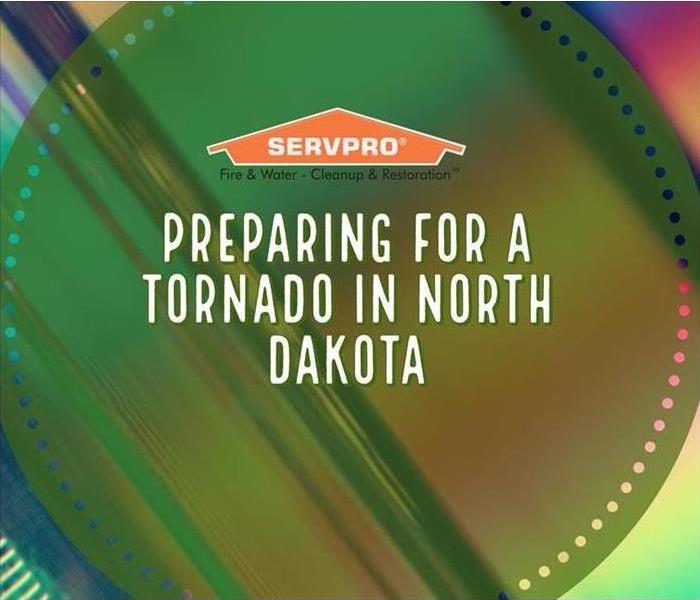Preparing for a Tornado in North Dakota
8/25/2022 (Permalink)
North Dakota Tornado Preparedness
North Dakota is known for its tornadoes. With an average of over 20 per year, it is a common occurrence within our state. Although most of these cause little to no damage and are hardly even noticed, there are some that cause massive devastation. In 1957, the tornado in Fargo resulted in $26 million in property damage ($236 million in 2020 USD) along with 12 fatalities. While the 1957 tornado was by far the worst to hit the state, smaller ones can cause damage to your home, vehicle, and business if you are not prepared.
The CDC recommends these 3 tips for tornado preparedness:
- Be ready
- Be aware of weather conditions
- Know where to shelter
Be Ready
This means having an emergency kit ready that has batteries, first-aid supplies, flashlights, food/water, and a battery-operated TV or radio. Have a plan for you and your family which you can go over and practice to make sure that it can be put into action immediately.
Be Aware of Weather Conditions
Paying attention to weather reports will give you an advanced warning of incoming storms. On your smartphone, you can have notifications turned on that alert you of bad weather. Additionally, you can watch for these weather patterns that indicate a tornado may be coming:
- A dark or green colored sky
- A large, dark, low-laying cloud
- Large hail
- A loud roar that sounds like a freight train
Know Where to Shelter
As a storm hits, you need to be able to take shelter to keep yourself safe. Best practices include:
- Go to the basement or an inside room with no windows on the lowest floor (bathroom, closet, center hallway).
- Avoid windows.
- For added protection, get underneath something sturdy (a heavy table or workbench). Cover your body with a blanket, sleeping bag or mattress. Protect your head with anything available.
- Do not stay in a mobile home.
- If you are outside or in a car, find a stable building to get behind and move only when it is safe.



 24/7 Emergency Service
24/7 Emergency Service
